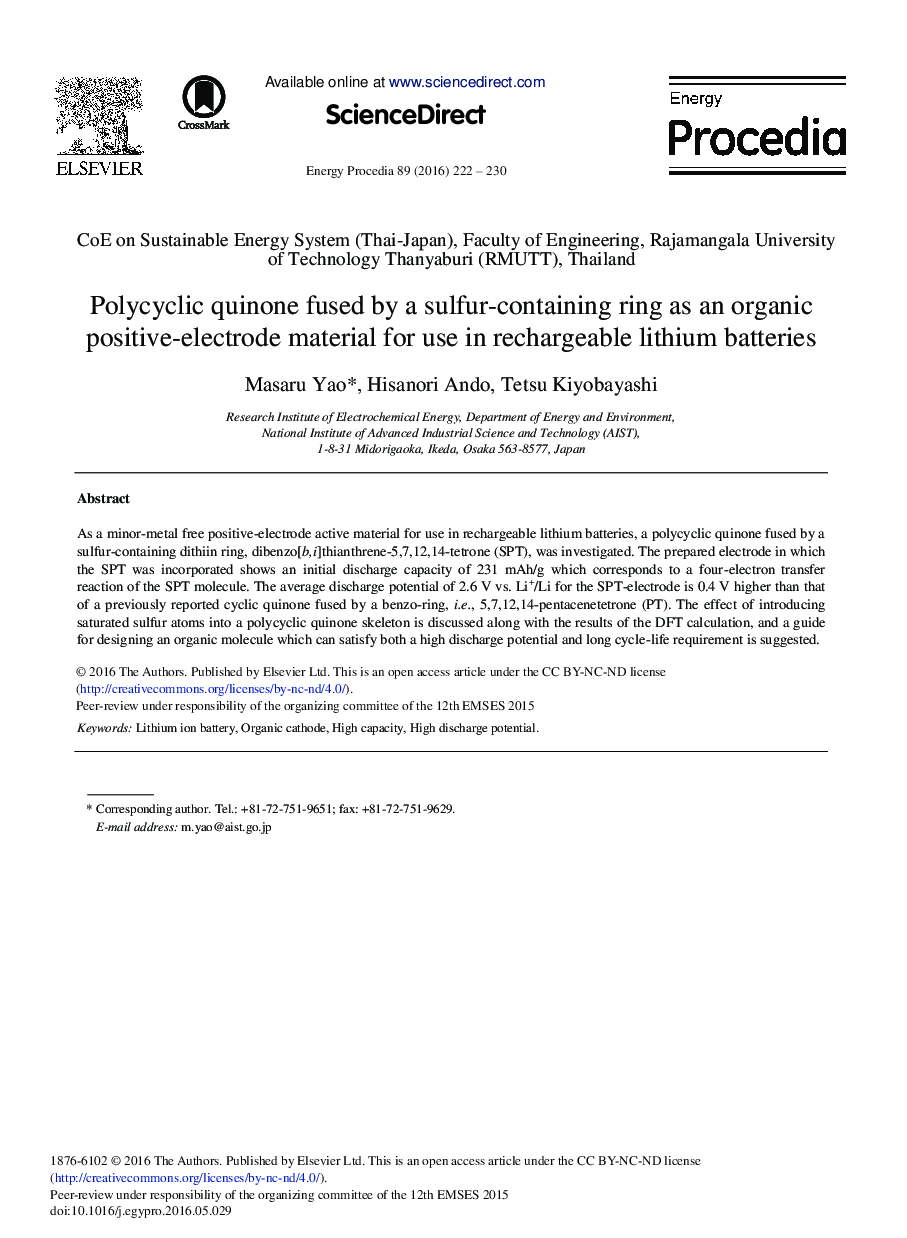| کد مقاله | کد نشریه | سال انتشار | مقاله انگلیسی | نسخه تمام متن |
|---|---|---|---|---|
| 1508745 | 1511146 | 2016 | 9 صفحه PDF | دانلود رایگان |

As a minor-metal free positive-electrode active material for use in rechargeable lithium batteries, a polycyclic quinone fused by a sulfur-containing dithiin ring, dibenzo[b,i]thianthrene-5,7,12,14-tetrone (SPT), was investigated. The prepared electrode in which the SPT was incorporated shows an initial discharge capacity of 231 mAh/g which corresponds to a four-electron transfer reaction of the SPT molecule. The average discharge potential of 2.6 V vs. Li+/Li for the SPT-electrode is 0.4 V higher than that of a previously reported cyclic quinone fused by a benzo-ring, i.e., 5,7,12,14-pentacenetetrone (PT). The effect of introducing saturated sulfur atoms into a polycyclic quinone skeleton is discussed along with the results of the DFT calculation, and a guide for designing an organic molecule which can satisfy both a high discharge potential and long cycle-life requirement is suggested.
Journal: Energy Procedia - Volume 89, June 2016, Pages 222–230